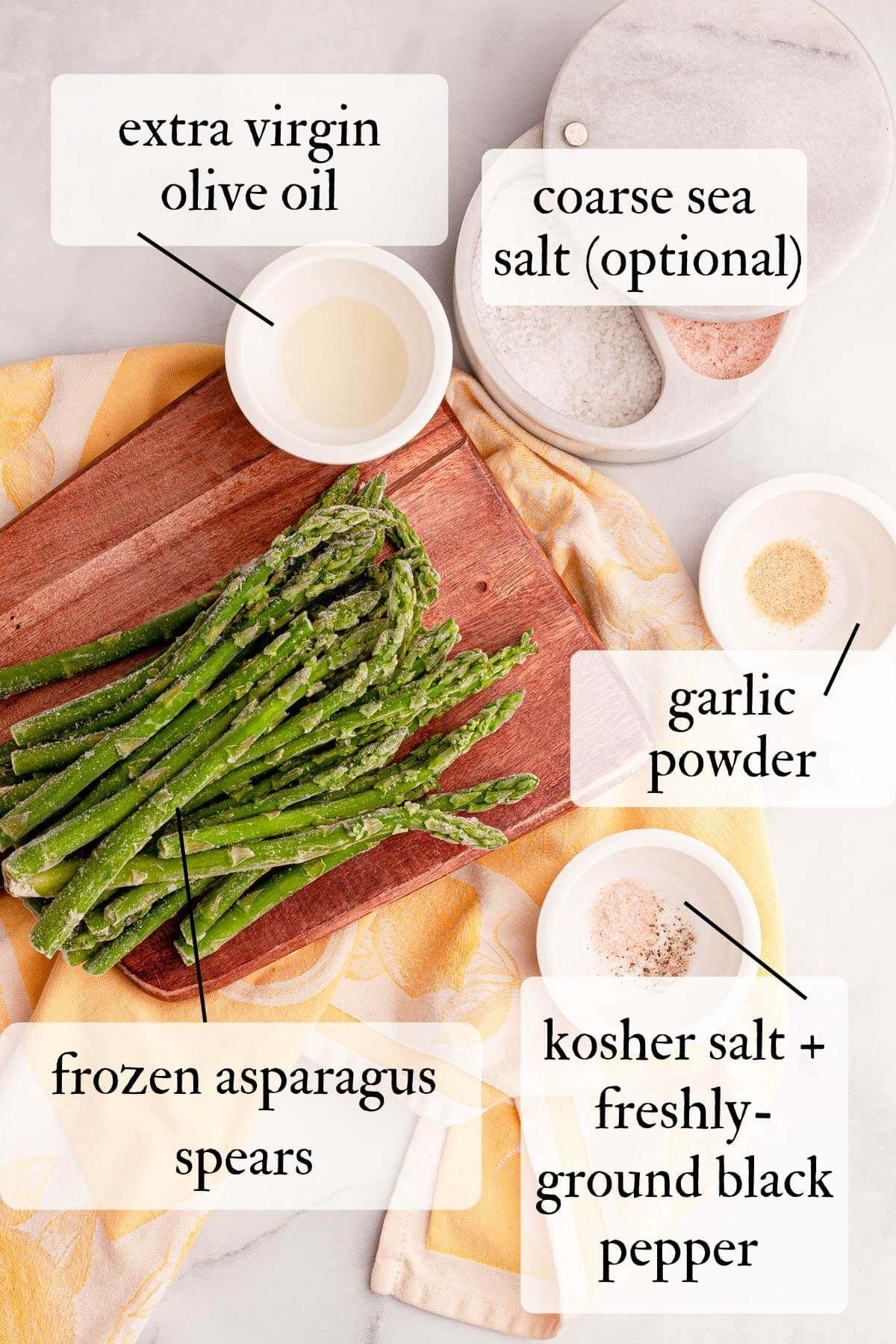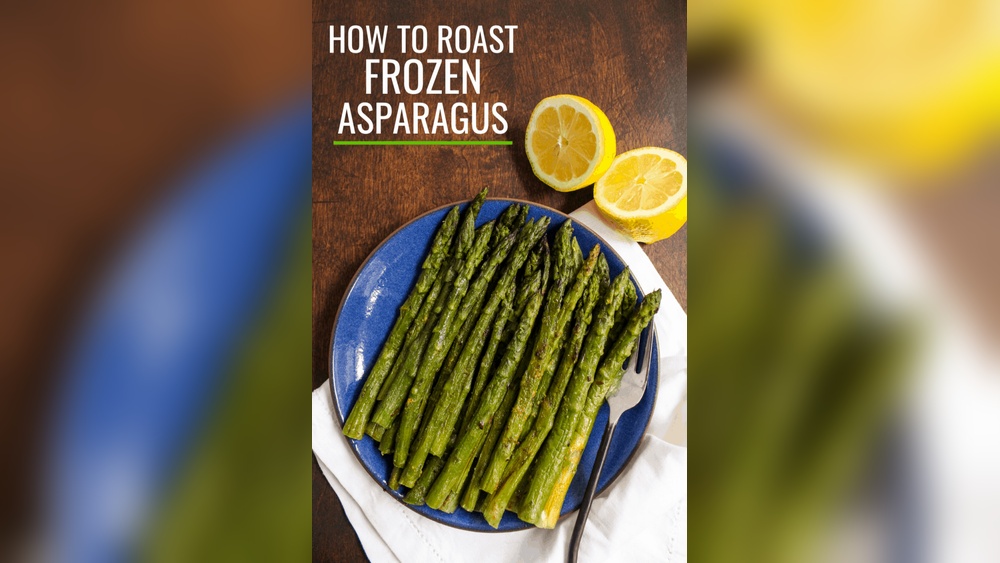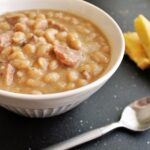Are you wondering how to cook frozen asparagus so it tastes fresh and delicious every time? You’re not alone—many people struggle with getting that perfect texture and flavor from frozen veggies.
The good news is, you don’t have to thaw it first or settle for soggy, mushy asparagus. Whether you want to roast it in the oven, air fry it for a quick snack, or pan-fry it for a simple side dish, there are easy tricks that will make your frozen asparagus crisp, tender, and full of flavor.
Keep reading, and you’ll discover step-by-step methods that fit your kitchen style and schedule. Get ready to turn your frozen asparagus into a tasty, healthy dish you’ll want to cook again and again!
Cooking Methods
Air frying frozen asparagus is quick and easy. Toss the asparagus with olive oil and simple seasonings like salt, pepper, or garlic powder. Spread them out in a single layer in the air fryer basket. Make sure there is space for air to flow around the spears. Cook at 400°F (204°C) for about 10-12 minutes. Shake the basket halfway through to cook evenly. The asparagus will be crispy on the outside and tender inside.
Roasting frozen asparagus requires a baking sheet and an oven preheated to 425°F (220°C). Spread the asparagus on the sheet in one layer. Drizzle with olive oil and sprinkle with salt and pepper. Roast for 15-20 minutes, turning once. Roasting gives a nice caramelized flavor and a tender texture without thawing.
Pan-frying frozen asparagus works well on the stove. Heat some oil in a large pan over medium heat. Add the frozen asparagus directly to the pan. Cook for 8-10 minutes, stirring often. This method cooks the asparagus quickly and keeps it slightly crisp. Season with salt, pepper, or herbs for extra taste.

Seasoning Tips
Oils like olive oil, avocado oil, and coconut oil work well with frozen asparagus. They help the spices stick and add flavor. Use light oils for a milder taste and strong oils for a bolder flavor.
Common spices include garlic powder, black pepper, red pepper flakes, and lemon zest. They bring out the fresh taste of asparagus. Sprinkle salt lightly to avoid overpowering the vegetable’s natural flavor.
Balance is key. Too much spice can hide the vegetable’s taste. A small pinch of chili flakes adds heat without overwhelming. Lemon zest or juice adds a fresh, tangy twist.
| Oils | Spices | Flavor Balance |
|---|---|---|
| Olive oil | Garlic powder | Light seasoning to highlight asparagus |
| Avocado oil | Black pepper | Moderate spice for warmth |
| Coconut oil | Red pepper flakes | Small amount for a spicy kick |
| Lemon zest | Fresh and tangy finish |
Avoiding Mushy Texture
Cooking frozen asparagus without thawing helps keep it firm and not mushy. Use high heat methods like roasting or pan-frying. These cook the asparagus quickly and seal in moisture.
Toss the frozen asparagus with a little olive oil and seasoning before cooking. Spread the spears in a single layer on a hot pan or baking sheet. This allows hot air to reach all sides.
Cook on medium-high heat for about 10-15 minutes. Turn or stir the spears halfway to ensure even cooking. The asparagus should be tender but still crisp.
Avoid covering the pan or steaming the asparagus, which can make it soggy. High heat keeps the texture light and firm. This method works well for roasting, sautéing, or using an air fryer.
Serving Suggestions
Frozen asparagus pairs well with many meals. Serve it alongside grilled chicken, baked fish, or steak for a healthy touch. It also complements pasta dishes and rice bowls nicely. A simple drizzle of lemon juice brightens the flavor.
For garnishing, sprinkle toasted almonds or parmesan cheese on top. Fresh herbs like parsley or dill add a nice color and taste. A dash of red pepper flakes gives a little heat.
Storage And Handling
Keep asparagus fresh by freezing it properly. First, wash and trim the stalks. Blanch them in boiling water for 2-3 minutes. Then, cool quickly in ice water. This stops cooking and keeps color and nutrients.
Dry the asparagus well before freezing. Place spears in a single layer on a tray. Freeze until firm, then move to sealed freezer bags. Remove as much air as possible to avoid freezer burn.
Label bags with the freezing date. Use frozen asparagus within 8-12 months for best taste. Store at 0°F (-18°C) or lower. Avoid thawing before cooking to keep texture firm and fresh.


Frequently Asked Questions
Can Asparagus Be Cooked From Frozen?
Yes, cook frozen asparagus without thawing by roasting, air frying, or pan-frying. Toss with oil and seasonings. Cook until tender and crisp.
Does Asparagus Get Mushy When Frozen?
Asparagus can become mushy if frozen improperly or thawed before cooking. Cooking directly from frozen helps maintain firmness.
Can You Eat Asparagus After It Has Been Frozen?
Yes, you can eat asparagus after freezing. Cook it directly from frozen by roasting, air frying, or pan-frying for best texture and taste.
How Long Do I Air Fry Frozen Asparagus?
Air fry frozen asparagus at 400°F (200°C) for 12-15 minutes. Toss with oil and seasonings before cooking. Shake basket halfway.
Conclusion
Cooking frozen asparagus is simple and quick. Choose your favorite method: air frying, roasting, or pan-frying. Season well to add flavor and enjoy a tasty side dish. Remember to cook it straight from frozen for the best texture. Try different spices to keep meals interesting.
Frozen asparagus can be a healthy, convenient choice anytime. Give it a go and enjoy fresh-tasting asparagus without the fuss.

Yes, working as , Food Blogger and Product Reviewer for last 6 years. Here you will get amazing deals for Smart kitchen products. I am your best source for the latest update in cooking trends. I provide insightful articles, reviews, and analysis on cutting-edge kitchen gadget. My mission is to empower readers with the knowledge they need to stay ahead in a rapidly evolving coking world. Join me as we explore the future of food technology and how it shapes our lives today and tomorrow.





